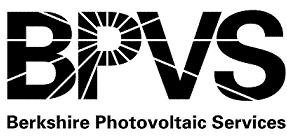How Solar Works

How PV Works
Photovoltaic cells are made of very pure semiconductor grade silicon similar to that used in computer chips. Silicon is the second most common element in the Earth’s crust. Electricity is produced as photons of sunlight penetrate the element, bumping electrons into a flow. PV cells are connected together to make a module. Modules are the building blocks connected together to make an array. The photovoltaic effect produces DC (Direct Current) electricity. This DC power is converted to AC (Alternating Current) electricity to match the American standards of AC frequency and voltage. The conversion is made by an important system component called the inverter. The array and inverter are engineered for efficiency and compatibility.
Utility Interactive PV:
A Utility Interactive, or grid-tied, PV system has the photovoltaic system connected and acting in parallel with the electric grid. As power is produced it is used primarily for loads within your building. If more power is produced than needed in-house, the remainder is automatically exported through your billing or revenue meter to the electric grid. In effect, the grid acts as your storage medium and your revenue meter tallies the ‘net metering’ exchange. The inverter constantly monitors grid power quality to provide a seamless generation match. If there is a power outage, the PV system will automatically shut down. This prevents a small PV system from trying to power the neighborhood, but more importantly it ensures the safety of utility personnel working on downed lines. Upon stable restoration of grid power, the PV system will automatically re-connect. We also offer a unique Utility Interactive inverter which can provide limited daytime-only power, without batteries, during grid outages. All our array designs and the inverter equipment we select and match for your PV system is ready to work with battery storage equipment added at a later date. Ask us about our customers whose PV systems are designed to work with their electric car charging needs!
Off Grid and Bi-Modal PV:
These are two similar types of systems which store power from the sun for night and inclement weather use and both require batteries. An off grid, sometimes called a standalone system, is cost effective when the expense of extending the utility lines is extreme. For some of our residential customers this has meant cost effectiveness for sites more than 1/6th mile from the grid. A bi-modal system will act in parallel with the electric grid like a utility interactive system and use solar power to maintain a fully charged set of batteries. In the event of a grid outage it automatically isolates from the grid and provides standby power. Many of our rural customers who suffer frequent grid outages select this type of system. Both systems need to maintain batteries which makes them slightly less efficient. Both involve more controls and safety features. Often because of this, our customers select bi modal systems to power only critical loads during outages such as lighting and refrigeration and a well pump. Sometimes we set these bi-modal systems up to work with a back up generator so all the loads at a site are powered and the site can withstand long outages during overcast weather with the generator called into service only for high demand appliances or to re charge the batteries. Batteries need replacement every 5 years if heavily used and every 10-15 years at maximum and these systems need periodic maintenance. Battery technology is changing rapidly and becoming much more cost effective. Some of our customers are opting to wean themselves from the grid and their utility by using PV with storage exclusively for dedicated loads like their well pump or IT equipment.
Take the First Steps!
Since 1985, Berkshire Photovoltaic Services Inc. (BPVS) has designed and installed hundreds of innovative Photovoltaic (PV) Systems in the area. We favor reliable equipment and PV components manufactured regionally and by established manufacturers. Our reputation for excellence and prompt service complements the ethos of our environmentally minded customers. Our business could not have thrived this long without their references and example.
All information shared with BPVS will be kept strictly confidential, and for BPVS use only.
Please see our Privacy Policy for further details.
Contact BPVS
60 Roberts Drive Ste. 109 North Adams, MA 01247
413-664-0152
info@bpvs.com
